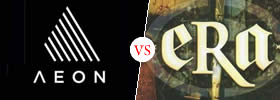Different types of Bank Accounts
Key difference: Bank Accounts are financial accounts offered by financial institutes to the respective bank customers. Bank accounts may vary according to their functions; hence they are opted as per the customers needs. Some of the mainly used bank account types are listed below.
There are different types of bank accounts existing in the society, which differ in their purposes and functions. A bank may have a positive, or credit balance, where the bank owes money to the customer; or a negative, or debit balance, where the customer owes the bank money. Broadly these accounts works as per their functioning and accordingly are managed in their respective sections. Some of the most commonly used bank accounts are elaborated below:
Comparison between different types of Bank Accounts:
.jpg)
Saving Accounts:
It is the most commonly used account; as per the name suggests this accounts holds all the savings of a customer. The account manages the deposits store or saved in it. It’s one of the most popular deposit accounts. This account provides the cheque facility and has a lot of flexibility for deposits and withdrawal of funds. This account promotes the habit of saving a relevant amount; hence this helps an individual to be on a safer side at the time of emergency.
.jpg) Current Account:
Current Account:
Current account holders are generally the Businessmen of the societies; as this account is never used for investment and saving purposes. Its deposits are the most liquid deposits; here there are no limits for the number of transactions, as they can be done any number of times a day. Mostly, these current accounts are under a big organization, company or firm name. The cheque book facility so provided enables the customer to deposit all types of cheques and drafts of their names or endorsed in their favor by third party names. The bank pays no interest on these accounts. On the contrary, a bank charges certain service charges, on current accounts.
.jpg)
Recurring Deposits Account:
These are special types of term deposits, which are suitable for the ones who do not enough savings, but are ready to save a small amount every month. Popularly, these are called as the RD accounts. These deposit accounts get the interest rate on their amount of deposition; through the monthly installment forms. These act a good source of saving for long time planning. The accounts is same like that of the fixed deposit/term deposit, the only difference lies; in their time of payment, as these have to be looked regularly during a month. Recurring Deposit accounts are normally allowed for maturities ranging from 6 months to 120 months.
 Fixed Deposits Account:
Fixed Deposits Account:
These are popular accounts, used all over; in which a customer deposits a fixed amount for a relevant time period. The bank provided a time interval of 7 days to 10 years. The term "fixed" in Fixed Deposits (FD) denotes the period of maturity or tenor. Therefore, the depositors are supposed to continue such Fixed Deposits for the length of time for which the depositor decides to keep the money with the bank. Accordingly, the banks introduce a variable interest rate which on the assigned time is received by the respective customers.
.jpg) Checking Account:
Checking Account:
As per the name, this account uses the check for all its transactions. The check acts as primary instrument for withdrawing money. Through this checking account, purchasing, paying of bills and a loan can be given to any respective person. The check can also be used to transfer the money from an individual’s checking account to the bank account at different financial institutes.
 Money Market Account:
Money Market Account:
Money Market Account pays interest at a higher rate than the rate paid on interest-bearing savings and checking accounts. Often, these accounts impose a minimum balance for the accounts to start the earning interests. The number of withdrawals done from this account is limited to six per month, out of which no more than three transactions could be done by cheque.
 Certificates of Deposit (CDs):
Certificates of Deposit (CDs):
This is a bank account which requires an account holder to make a deposit and agree to leave funds in the account for a specific amount of time. In return for this agreement, the financial institution pays interest to the account. Frequently, these are referred to the time deposits. This account holder needs to keep their money for the specified period of time, and cannot withdraw the money before that relevant time. However, some financial institutions, allow the account holders to withdraw the interest without affecting the principal.
 No-Frills Bank Accounts:
No-Frills Bank Accounts:
An account of this type will likely allow only a limited number of checks, deposits, and withdrawals to be processed in any given month. In most cases, interest is not paid on a no-frills bank account.
Along with these accounts, there are also other different accounts offered by different financial institutions.
Image Courtesy: fpguru.com, compare100.com, ombannacredit.com, tamil.goodreturns.in, marketintelligencecenter.com, gobankingrates.com, norstatesbank.com, pondicherryurbanbank.in









Add new comment